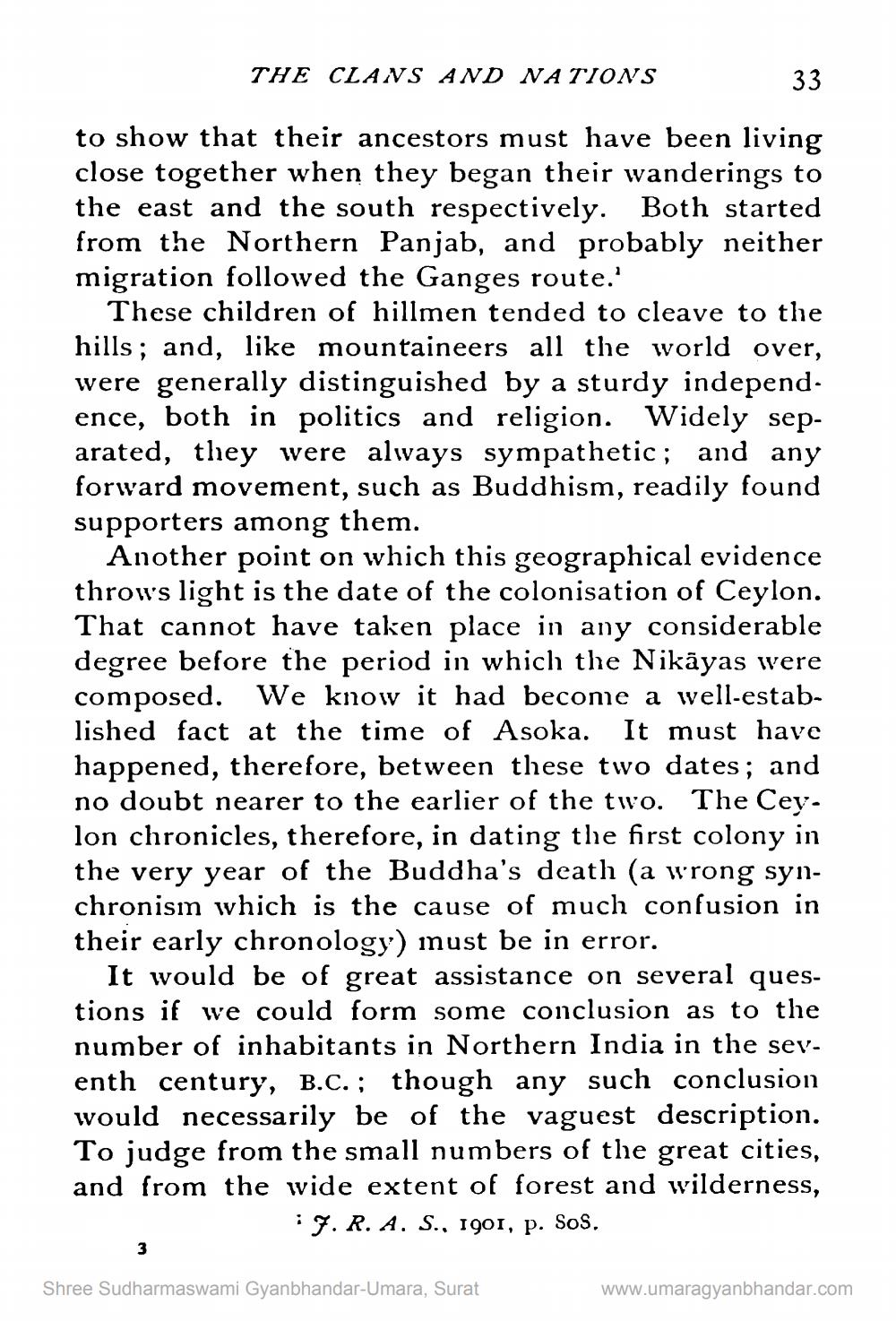________________
THE CLANS AND NATIONS
33
to show that their ancestors must have been living close together when they began their wanderings to the east and the south respectively. Both started from the Northern Panjab, and probably neither migration followed the Ganges route.'
These children of hillmen tended to cleave to the hills; and, like mountaineers all the world over, were generally distinguished by a sturdy independence, both in politics and religion. Widely separated, they were always sympathetic; and any forward movement, such as Buddhism, readily found supporters among them.
Another point on which this geographical evidence throws light is the date of the colonisation of Ceylon. That cannot have taken place in any considerable degree before the period in which the Nikāyas were composed. We know it had become a well-established fact at the time of Asoka. It must have happened, therefore, between these two dates; and no doubt nearer to the earlier of the two. The Ceylon chronicles, therefore, in dating the first colony in the very year of the Buddha's death (a wrong synchronism which is the cause of much confusion in their early chronology) must be in error.
It would be of great assistance on several questions if we could form some conclusion as to the number of inhabitants in Northern India in the seventh century, B.C.; though any such conclusion would necessarily be of the vaguest description. To judge from the small numbers of the great cities, and from the wide extent of forest and wilderness, : 7. R. A. S., 1901, p. SoS.
3
Shree Sudharmaswami Gyanbhandar-Umara, Surat
www.umaragyanbhandar.com




